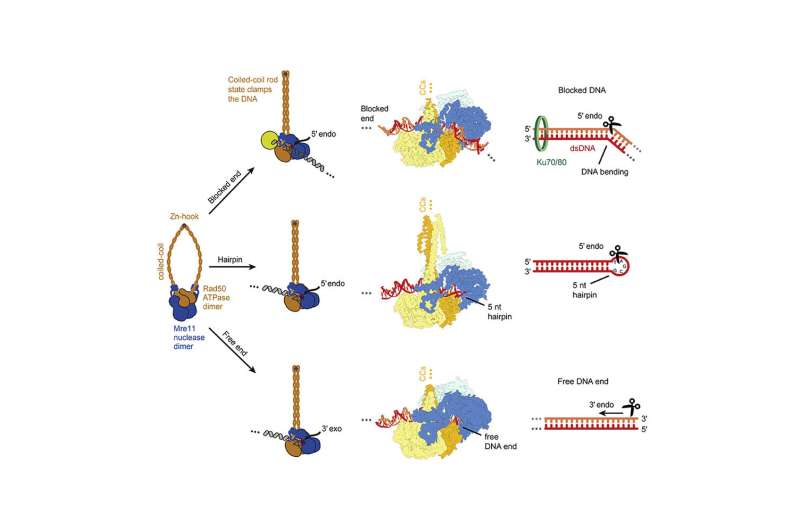Structural and mechanistic insight into DNA repair

DNA double-strand breaks are one of the biggest threats to the genome and a driving force of carcinogenesis. Cellular repair mechanisms such as homologous recombination are essential for the maintenance of genome stability and require an initial processing of breakpoints in order to generate free DNA ends—a process that has been little understood to date.
Scientists led by Prof. Karl-Peter Hopfner, Director of LMU's Gene Center Munich, have now managed to elucidate the structural mechanism by which the Mre11-Rad50 (MR) protein complex, which is decisive for the initial repair, recognizes and processes blocked DNA ends.
MR is a so-called endonuclease—an enzyme that can internally cleave strands of DNA. Hopfner's team used state-of-the-art techniques such as cryo-electron microscopy and biochemical assays to investigate the MR complex more closely.
The research unites the various nuclease activities of MR into a structural mechanism that gives us better understanding of the repair of DNA double-strand breaks.
The research was published in Molecular Cell.
More information: Fabian Gut et al, Structural mechanism of endonucleolytic processing of blocked DNA ends and hairpins by Mre11-Rad50, Molecular Cell (2022). DOI: 10.1016/j.molcel.2022.07.019
Journal information: Molecular Cell
Provided by Ludwig Maximilian University of Munich



















